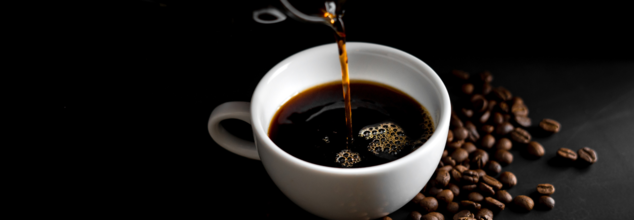
(Credit-Canva)
Americans Cutting Back On Caffeine With More Coffee Than Tea
When it comes to morning routines, people do their own thing, whether it is waking up, exercising and eating a wholesome breakfast or waking up, washing and wearing fresh clothes and immediately going for coffee. Many coffee drinkers say that they simply cannot start their day without a fresh cup 'a joe, and not having coffee eventually leads them to have a headache or feeling groggy. While you may think that having coffee is the reason why caffeine intake has risen in the US, there is a catch to it. Less and less people are drinking coffee in the past few years, but the few people who have continued to drink it have increased their caffeine intake by a lot!
The latest research shows that fewer Americans are drinking the usual caffeinated drinks like coffee, soda, and tea but, those who still enjoy these drinks are choosing stronger versions, meaning they're getting more caffeine in each serving. So, even though fewer people are drinking these beverages, the total amount of caffeine Americans are consuming is going up. Even with this increase, the average person's caffeine intake is still below the safe limit of 400 milligrams per day. Researchers say the market for caffeinated drinks has changed a lot, and they need to keep track of these changes to understand how it affects people's health.
A recent study, published in the Food and Chemical Toxicology, involving over 49,000 American adults reveals a significant shift in caffeine consumption patterns. Coffee has become the most popular way for Americans to get their caffeine fix. Now, 70% of all caffeine consumed comes from coffee. This is a big jump from ten years ago. On the other hand, sodas are losing their popularity as a caffeine source. Only 15% of caffeine now comes from sodas, which is a big drop. Tea is also seeing a decline. Fewer people are drinking tea overall. However, those who still drink tea are drinking more of it, almost doubling their caffeine intake from tea. This means that while fewer people are drinking tea, those who do are drinking stronger brews or more cups. It's clear that people's choices for caffeinated drinks are shifting.
Study author Diane Mitchell of the Institute for Advancing Health through Agriculture, Texas A&M AgriLife, said in a news release, “We are all aware that the caffeinated beverage market has changed dramatically over the past 10 years, yet no comparable, comprehensive caffeine intake data have been published in recent years".
Do Energy Drinks Make The List?
While many people may not know this, energy drinks are a notorious source of caffeine, and many people do not even know that many of their favorite drinks contain an a lot of caffeine. Energy drinks are becoming a more common way for people to get their caffeine. These drinks, which weren't as popular a decade ago, now account for 6% of total caffeine intake. This increase is because there are now many more energy drink brands available. The number of brands has almost doubled. This gives people more choices, and many are opting for these high-caffeine beverages. Energy drinks often contain a lot of caffeine in a small can or bottle, which can quickly boost energy levels. The growing number of energy drink options is changing how people consume caffeine.
“With a constantly evolving market of caffeinated beverages and the potential impact it has on beverage consumption patterns, continued monitoring of caffeine intakes is warranted," the authors concluded.
What is the Recommended Healthy Caffeine Intake?
Even though people are changing how they consume caffeine, the average intake is still below the recommended safe limit. Health experts recommend that adults consume no more than 400 milligrams of caffeine per day. This is roughly equal to two or three regular cups of coffee. While the types of drinks people choose are changing, and some are opting for stronger options, overall consumption remains within a safe range. Researchers believe it's important to keep monitoring caffeine intake because the market for caffeinated drinks is constantly changing. They want to make sure that people understand how these changes might affect their health.
© 2024 Bennett, Coleman & Company Limited

